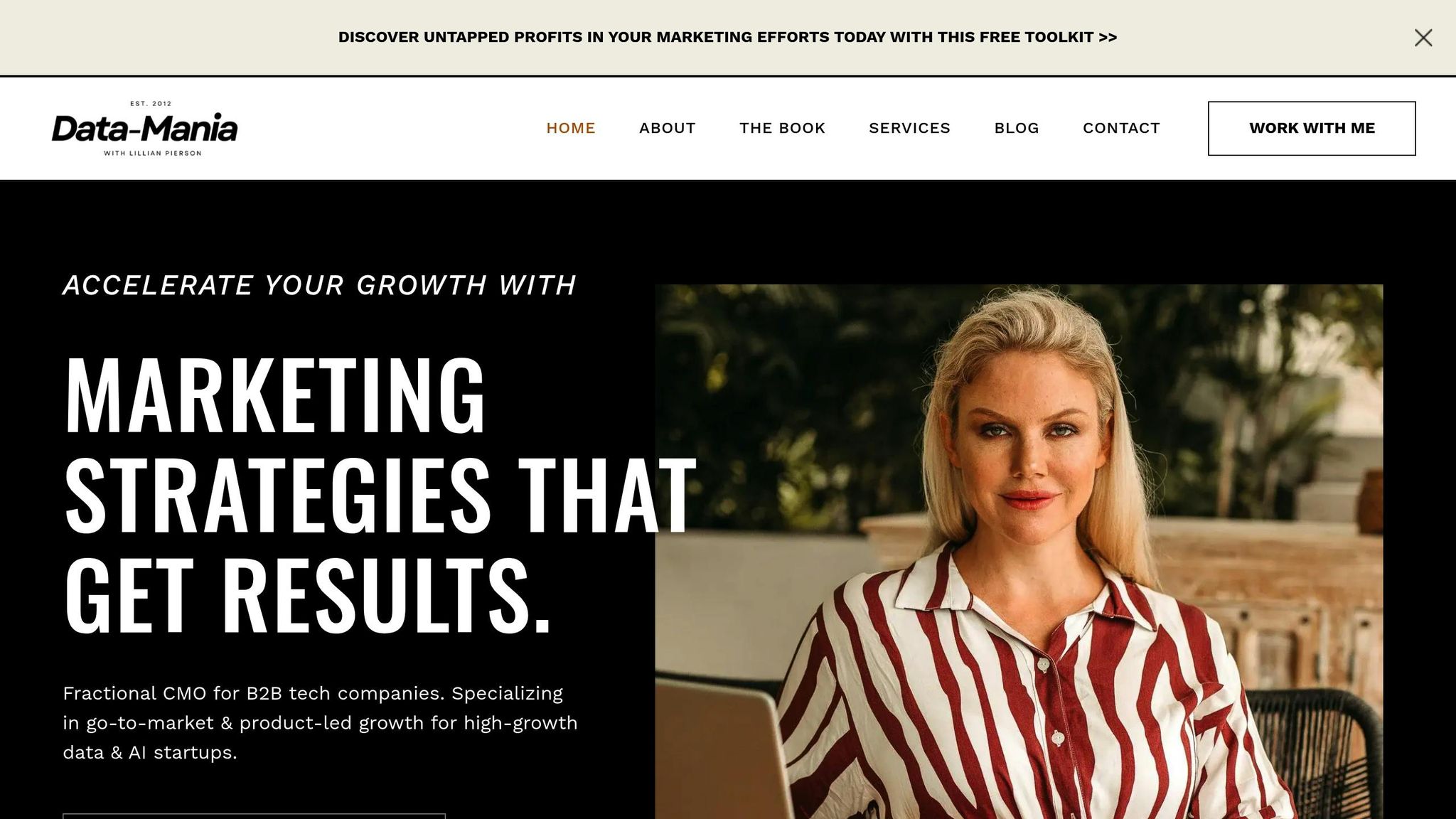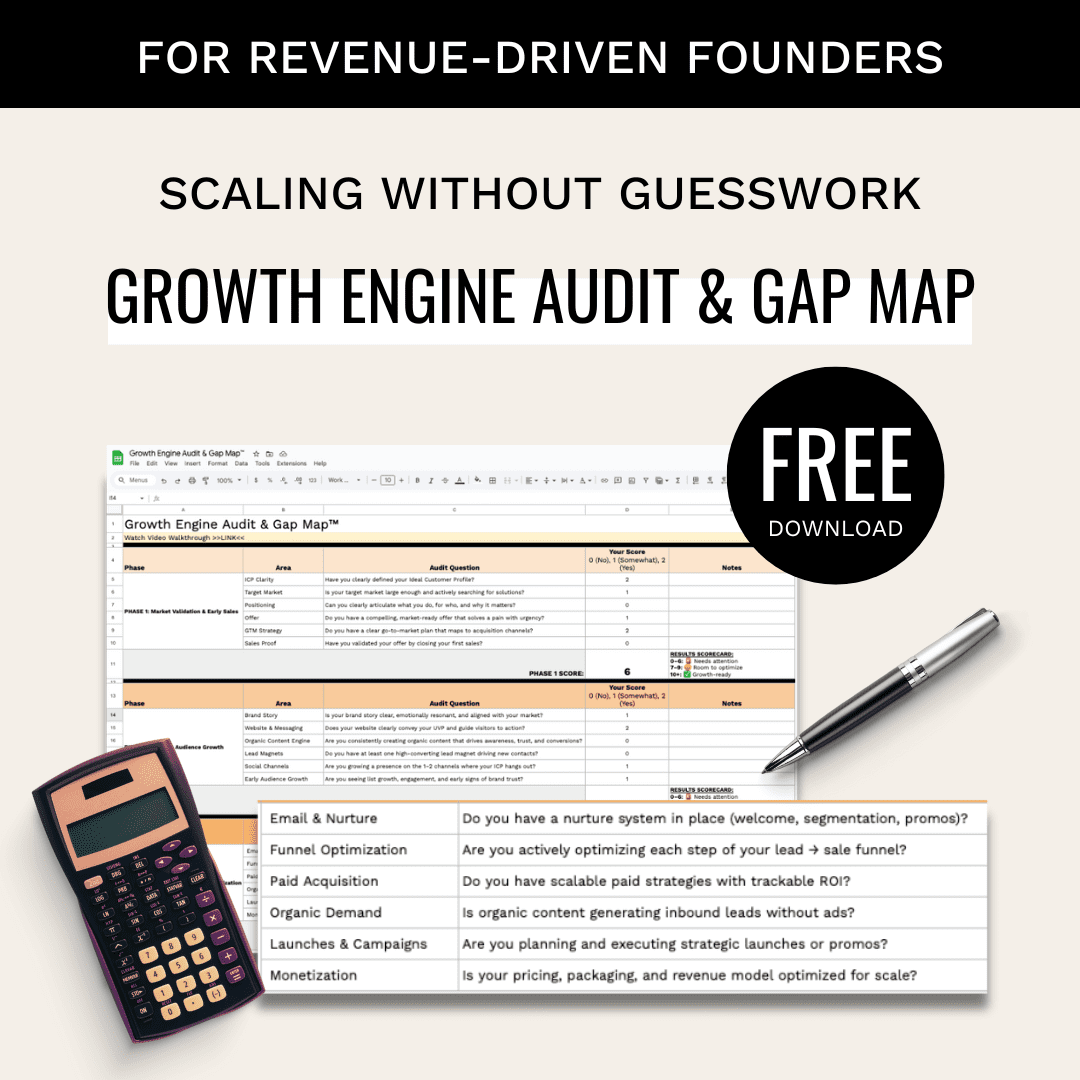Struggling to measure marketing ROI effectively? You’re not alone. While 74% of B2B marketers see benchmarking as essential, 63% admit they find it challenging to track ROI across channels. This guide breaks down how to evaluate your marketing channels, optimize your budget, and boost conversions by 20-35%.
Key Takeaways:
- What is Benchmarking? Compare your marketing performance to industry standards to identify high-ROI channels like LinkedIn Ads (113% ROAS) vs. Facebook (29% ROAS).
- Core Metrics to Track: CTR, CVR, CAC, and more. For instance, LinkedIn Ads have a 1-2% CTR and a $380 CAC, while Google Search has a 3.17% CTR and a $520 CAC.
- Strategies to Improve: Use data-driven insights to adjust budgets, focus on revenue-driven metrics, and avoid vanity metrics.
- Common Mistakes to Avoid: Ignoring deeper metrics, relying on outdated benchmarks, or skipping consistent reviews.
Quick Comparison Table:
| Channel Type | CTR | CVR | CAC |
|---|---|---|---|
| LinkedIn Ads | 1-2% | 2-5% | $380 |
| Google Search | 3.17% | 2.41% | $520 |
| Email Marketing | 3.42% | 4.77% | $53 |
This guide will show you how to set up a benchmarking system, track the right metrics, and make smarter decisions to drive better results.
Beyond Metrics: Building Bottom-Line ROI in B2B Marketing
Core Benchmarking Concepts
Building on essential metrics, these concepts help uncover how different channels contribute to business performance.
Key Metrics Explained
To benchmark channels effectively, it’s crucial to grasp core metrics. Here’s a snapshot of recent data showing variations in key performance indicators across B2B marketing channels:
| Channel Type | CTR | CVR | CAC |
|---|---|---|---|
| LinkedIn Ads | 1-2% | 2-5% | $380 |
| Google Search | 3.17% | 2.41% | $520 |
| Email Marketing | 3.42% | 4.77% | $53 |
B2B tech companies often aim for a 3:1 lifetime value ratio. Multi-touch attribution offers a deeper understanding of channel success. For example, Dreamdata‘s research reveals that LinkedIn influences 42% more late-stage deals than Google Ads in complex B2B sales cycles. This underscores why focusing solely on surface-level metrics can lead to an incomplete picture.
Channel Impact on Business Results
Accurate benchmarking depends on several factors:
- Collecting data over a minimum of three months
- Using industry-specific baselines
- Comparing ad spend consistently (at least $10k per channel)
HubSpot‘s analysis of over 12,000 B2B companies shows that combining webinar promotions with LinkedIn nurture campaigns can boost email CTR by 35%. These methods often support the 20-35% conversion gains previously mentioned.
"Interactive content like ROI calculators drives 2.4x more Marketing Qualified Accounts than eBooks, while technical spec-focused CTAs convert 37% better than brand messaging in bottom-funnel display ads"
Channel performance also varies by funnel stage. For instance, enterprise tech firms using ABM strategies that integrate LinkedIn Ads, Google Search, and webinars report 22% lower blended CAC by employing sequential nurturing. Seasonal trends also play a role – data shows a 15% drop in conversion rates during summer months. This makes rolling 12-month averages more reliable than static annual benchmarks for tracking performance.
Creating Your Benchmarking System
With your core metrics in place, you can build a practical benchmarking system by focusing on three key components:
Data Collection Methods
Gather data from these three sources:
- Direct Customer Interactions: Use tools like chatbots and in-app surveys to gather real-time feedback and engagement data. For example, Userpilot leverages in-app surveys to gain detailed insights into user behavior and preferences.
- CRM Analysis: Monitor metrics like lead-to-opportunity ratios and pipeline velocity. Companies with integrated CRM systems see 22% more accurate attribution when combining web analytics with customer journey data.
Setting Channel Metrics
Each channel requires tailored metrics to gauge performance effectively. Use this framework based on channel type and business stage:
| Channel Type | Primary Metric | Industry Benchmark | Validation Method |
|---|---|---|---|
| LinkedIn Ads | Cost Per Influenced Company | $42 | 30-day rolling average |
| Content Marketing | Average Time on Page | 2:51 minutes | Quarterly cohort analysis |
| Email Campaigns | Lead-to-MQL Rate | 18% | Statistical significance testing |
Automate your data collection processes to capture analytics in under two seconds. This ensures precise, real-time tracking without slowing performance.
Comparing Across Channels
Standardize your data using revenue attribution weighting. For instance, Refine Labs analyzed $8.2M in ad spend across 308M impressions, emphasizing the need for unified measurement frameworks.
Here are two ways to standardize:
- Time-Adjusted Engagement: Assign points to interactions (e.g., page views = 1 point, form submissions = 10 points) to create comparable engagement scores across channels.
- Cost Efficiency Ratios: Calculate channel-specific CAC:LTV ratios. Companies applying this method report 15% more accurate budget allocation.
For B2B tech businesses, prioritize pipeline-influenced metrics over surface-level engagement data. This multi-source approach aligns with earlier strategies for optimizing conversions at different funnel stages.
sbb-itb-e8c8399
Using Benchmarks to Improve Results
Once your benchmarking system is up and running, the next step is using it to improve outcomes. Here’s how to do it through three main actions:
Identifying Underperforming Channels
Start by comparing your channel metrics to industry standards through a gap analysis. Focus on three critical metrics that directly impact your results:
- Return on Ad Spend (ROAS)
- Cost per influenced company
- Conversion rates (typically 3-5% for B2B websites)
Pay particular attention to channels that play a role in guiding enterprise decision-makers through the sales process. Don’t just look at numbers – also assess qualitative factors like how well the audience aligns with your target market.
Adjusting Budgets and Strategies
Use the insights from your benchmarks to make calculated budget adjustments. Here’s a quick guide:
| Phase | Budget Adjustment | Timing |
|---|---|---|
| Initial Changes | Shift 20-30% from low-performing channels | Immediately |
| Testing New Channels | Allocate 5-10% to emerging opportunities | Quarterly |
| Fine-Tuning | Make small incremental updates | Monthly |
Leveraging Advanced Tools
Modern tools can take benchmarking to the next level, especially with predictive analytics and AI. Here’s how they can help:
1. Multi-Touch Attribution Models
Platforms like Dreamdata track closed-won deals over a 12-month period. This provides detailed insights into which touchpoints contribute the most to conversions, helping you refine your channel strategies.
AI tools offer advanced features that can transform your benchmarking process. These include:
- Real-time detection of unusual performance changes
- Budget modeling for different scenarios
- Adjusting benchmarks dynamically based on new data
3. Validation Framework
To ensure your benchmarks are accurate and actionable, apply these checks:
- Perform statistical validity tests
- Match cohorts by company size and industry
- Ensure a minimum of 100 conversions per channel for reliable comparisons
Avoiding Common Mistakes
Establishing benchmarks is important, but sidestepping these common mistakes is just as crucial for maintaining strong channel performance:
Ignoring Deeper Metrics
It’s essential to focus on metrics that directly impact outcomes instead of getting distracted by vanity metrics. This aligns with the earlier discussion on differentiating vanity metrics from pipeline-driven KPIs.
For example, instead of simply tracking engagement, analyze how channels contribute to pipeline growth, revenue, and customer acquisition efficiency. LinkedIn, for instance, shows a $76 lower cost per influenced company compared to competitors. This highlights why revenue-related metrics often matter more than surface-level engagement numbers.
Keeping Benchmarks Up-to-Date
Staying current with benchmarks is critical for effective budget reallocation, as outlined in Section 4. Here are some ways to ensure benchmarks remain relevant:
- Automate CRM-analytics integrations for real-time tracking.
- Leverage industry benchmarks with tools like Dreamdata’s live system, which tracks data from over 30 SaaS companies. This pairs well with multi-touch attribution strategies discussed in Advanced Performance Tools.
- Review performance quarterly to account for longer sales cycles.
"Monthly metric reviews miss critical mid-funnel impacts in extended sales cycles".
The goal is to maintain a consistent measurement system while staying flexible to market changes. Companies that excel often combine automated tracking with competitive analysis to stay ahead of shifts in their industry.
Conclusion
Main Points Review
To get the most out of benchmarking, it’s critical to focus on metrics that directly affect revenue, bring together data from multiple sources, and conduct quarterly reviews using consistent frameworks.
Here are some practical strategies to keep in mind:
- Focus on Revenue-Driven Metrics: Prioritize metrics that impact your bottom line instead of getting distracted by vanity engagement numbers. This ties directly to the channel-specific metric framework discussed in Section 3.
- Blend Data Across Channels: Companies that excel at benchmarking use data from multiple sources to get a full picture of performance. For instance, a website conversion rate of 2.5% should be analyzed alongside other key performance indicators specific to each channel.
- Stick to Quarterly Reviews: Regular updates every quarter, paired with standardized reporting methods, ensure benchmarks stay relevant. This complements the automated systems mentioned in Avoiding Common Mistakes.
Data-Mania Services

If you’re looking for expert help in optimizing your marketing channels, Data-Mania provides fractional CMO services designed specifically for technology companies. Their approach blends data analytics with marketing leadership to tackle common benchmarking hurdles.
Here’s what Data-Mania can bring to the table:
- Custom Tracking Solutions: They specialize in building multi-touch attribution models (as detailed in Advanced Performance Tools) to measure complex metrics like cost per influenced company.
- Strategic Channel Integration: They create hybrid strategies that balance tried-and-true methods with newer approaches, following the funnel-stage performance principles from Section 2.
- Enhanced Performance Tools: Their automated dashboards combine web analytics with campaign-specific KPIs, all tied to clear, goal-oriented frameworks [10].
FAQs
What key performance indicators (KPIs) do you prioritize in measuring marketing effectiveness within a SaaS environment?
When evaluating marketing in SaaS, focus on metrics that directly connect to revenue and pipeline growth. Below are some key channel-specific KPIs:
| Metric Category | Primary KPIs | Target Benchmarks |
|---|---|---|
| Acquisition | CAC | $18-60 per lead |
| Conversion | Signup-to-Paid Rate | 5-15% for enterprise |
These metrics align with the frameworks covered in Creating Your Benchmarking System and help refine acquisition funnels.
For example, a cybersecurity SaaS company saw a 63% improvement in trial conversions by setting specific webinar attendee-to-trial rate thresholds.
To track cross-channel performance effectively, use a mix of quantitative metrics (weighted at 70%) and qualitative insights like feedback from the sales team (weighted at 30%). Aim to review these KPIs quarterly using the standardized frameworks discussed earlier.
Related Blog Posts
- Marketing Tech Stack Checklist for Early-Stage Startups
- How to Build a SaaS Marketing Strategy from Scratch
- How to Choose Cross-Channel Attribution Tools for B2B
- How Co-Marketing Boosts B2B Tech Partnerships




